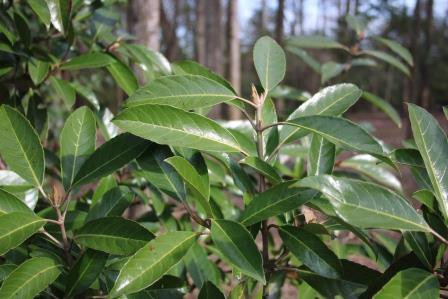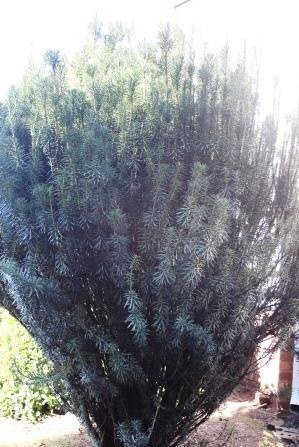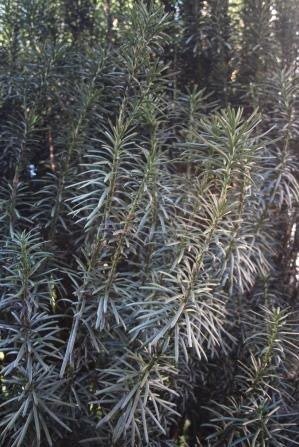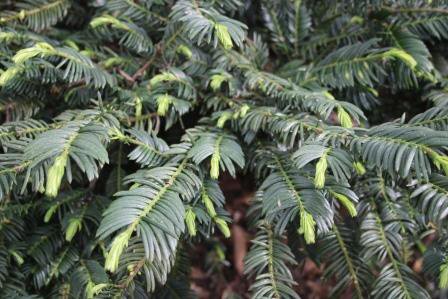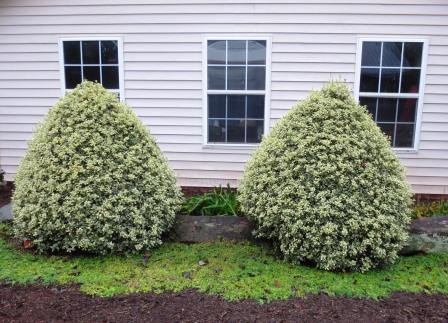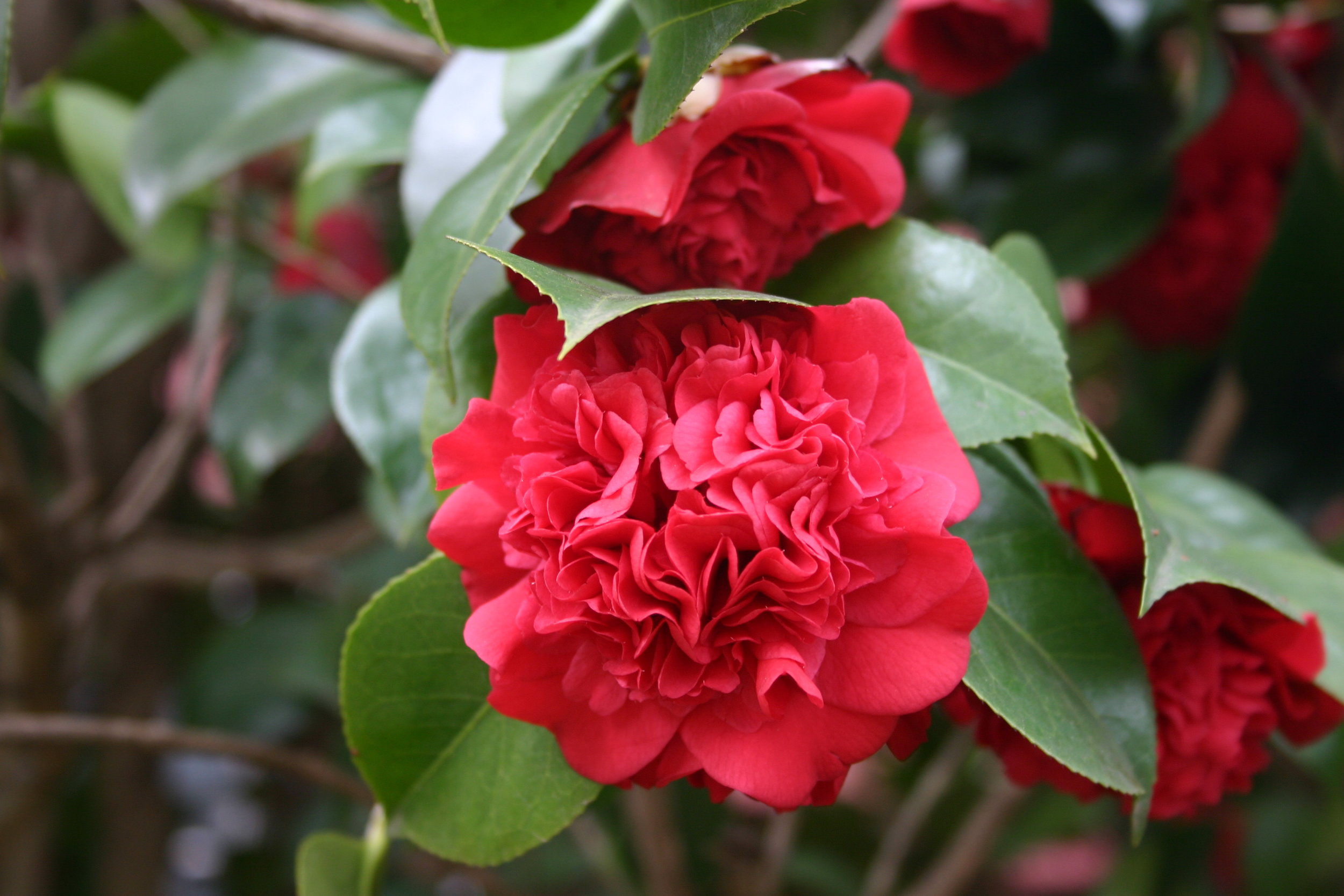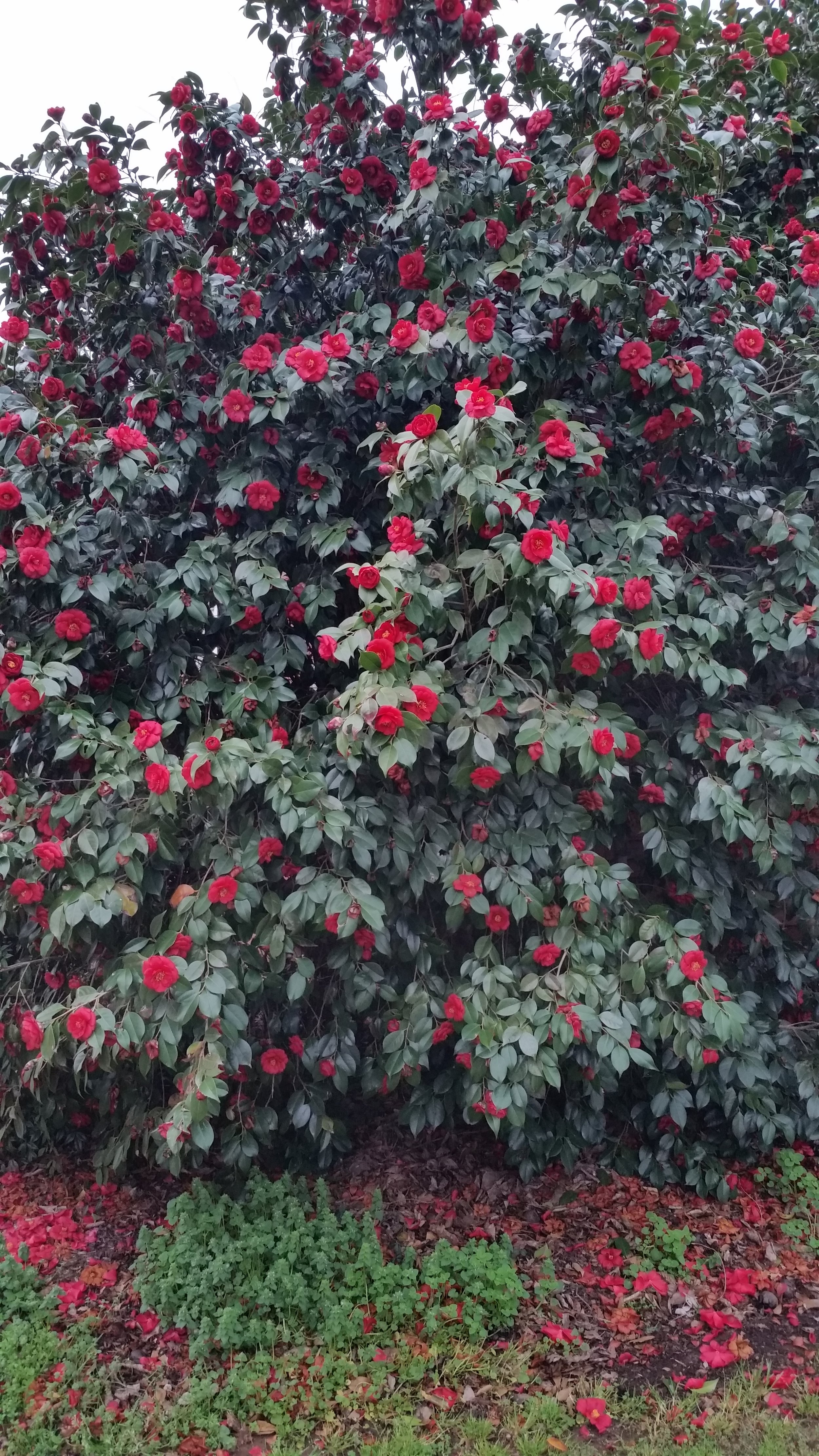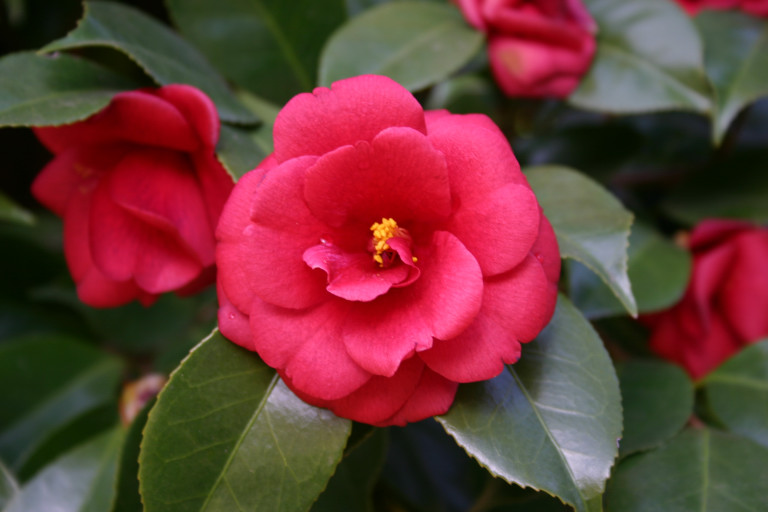Evergreen shrubs give life to the winter garden. In warm weather, they provide a background that makes other plants, especially flowers and variegated specimens, look better by contrast. Last week we looked at several good choices for sun. Today, let’s a look at a couple of good background evergreens for shadier areas.
While most Viburnum (pronounced vih-BUR-num) are deciduous, evergreen Viburnum awabuki ‘Chindo’ has large, glossy leaves that are equally attractive as a backdrop or a featured specimen. ‘Chindo’ grows fast – one to two feet per year – and will thrive in almost any soil. It won’t do well in deep shade, but dappled shade or partial shade prevents leaf scorch. Mature specimens will have clusters of small white flowers and clusters of red berries that look fabulous against its deep green leaves. ‘Chindo’ naturally forms a pyramidal shape. It will be loose in part shade, dense with more sun. It will grow in zones 7 through 9, and is drought tolerant once established. Allow plenty of space, because a mature plant will reach 12 feet tall and 8 feet wide. Deer tend to avoid the thick leaves of this easy shrub.
Camellia sasanqua and Camellia japonica (pronounced kah-MEE-lee-ah jah-PON-ih-kah) are well known and beloved for their shade tolerance and their beautiful blooms. Camellia japonica prefers partial to full shade. It is a good choice for woodland gardens. C. japonica leaves are larger than C. sasanqua, probably to increase photosynthesis in lower light levels. There are numerous cultivars. These tall shrubs are slow growing but will reach 12 feet or more.
Camellia japonica ‘Professor Sargent’ is popular and widely available.
Camellias grow in zone 7 through 9, in well-drained acidic (pH 5.5 to 6.5) soil containing plentiful organic matter. They produce showy flowers in winter, in shades of red, rose, white, pink, and bi-colors. Flower forms range from singles with prominent yellow stamens to “formal double” types with overlapping petals and no visible stamens.
Very cold temperature or ice and snow may damage Camellia flowers, causing them to brown and drop off. Buds are numerous, so flowering will resume when weather extremes abate. It is best to rake up and discard fallen flowers, to help prevent diseases and insect problems. Yellow leaves are a symptom of too alkaline soil. Purchase plants that are actively blooming to ensure your selection is your preferred color. My favorite cultivar is ‘Nuccio’s Pearl,’ a formal double white flower with a slight pink flush. Gorgeous! Until blooms get zapped by cold, that is. Then they turn a sickly tan and fall off a few days later.
The Cephalotaxus genus (“Yew” or “Plum Yew”) offers species that fit any growth habit desired - spreading, upright, skinny. The fernlike, needled foliage emerges light green and matures to a deep, rich green. All forms are slow growing and happy in shade. I decided to take a chance and planted Cephalotaxus harringtonia ‘Fastigiata’ in a sunny area next to my home. I have given it supplemental irrigation during drought. Despite being recommended for shade, it happily matured to 15 feet tall, four feet wide. It is a good source of holiday greenery, since cut stems last a long time in water and provide good contrast to the more traditional Christmas greens. Its narrow mature width makes it a good alternative to ‘Sky Pencil’ holly.
My favorite evergreen shrub for shade is Osmanthus (pronounced oz-MAN-thus), or Tea Olive. Shrubs flower in late summer to autumn, a clean, fruity fragrance that every nose enjoys. The white flowers are tiny but numerous. An orange-flowered variety is available but it blooms less profusely than the white.
Osmanthus fragrans will reach heights of 20 feet, in zones 8b through 11. Its leaf edges are smooth or very slightly toothed. Osmanthus x fortunei, Fortune’s Tea Olive, tolerates more sun and more cold than O. fragrans. It will reach heights of 25 feet, in zones 7b through 10. Juvenile leaves are toothed while mature leaves tend to have smooth margins. The cultivar ‘Fruitlandii’ has outstanding fragrance.
Osmanthus heterophyllus has leaves that strongly resemble Holly (Ilex). It is sometimes called “Holly Tea Olive.” It matures at 15 feet, which makes it easier to incorporate into a mixed border. It will tolerate a more alkaline soil than the first two. A variegated form, ‘Goshiki,’ is a favorite in the Mary Snoddy garden. ‘Goshiki’ means “five colors,” an allusion to the dark green, light green, cream, and white leaves. New growth is a rosy pink. I find that ‘Goshiki’ blooms less than the others, but it may be because I keep it sheared into tight cones. You may have noticed that I have an affinity for gumdrop-shaped topiary. Deer usually ignore all members of the Osmanthus family, especially after they gain size.
I cannot leave the subject of evergreen backgrounds without a mention of narrow choices. If your home is site on a narrow lot with neighbors close on either side, the space between houses is shaded by the structures themselves. When seeking “skinny” shrubs, look for “fastigiate” or “columnar” on plant tags. Both these mean the shrub has a narrow profile. If space is super tight, consider growing vine Confederate Jasmine or Clematis armandii on a fence to provide privacy and a solid green backdrop.

